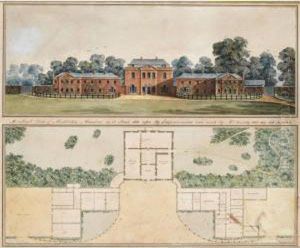Thomas Cundy Paintings
Thomas Cundy (1765–1825) was an English architect known primarily for his work as a surveyor and architect in the development of the Grosvenor Estate in London. Born into a humble background, Cundy's talent in design and architecture allowed him to rise to prominence in the early 19th century. He began his career as a carpenter but soon transitioned into architecture, a field in which he would make significant contributions.
Cundy's architectural style was varied, but he is particularly noted for his work in the Regency style. His designs often featured classical elements, and he was adept at integrating new buildings into existing urban landscapes in a way that was both sympathetic and harmonious. He became the surveyor for the Grosvenor Estate, one of the most prestigious property developments in London, in 1804. In this capacity, he was responsible for the design and construction of numerous buildings and developments in the Mayfair and Belgravia areas.
One of Cundy's most notable projects on the Grosvenor Estate was the development of Belgrave Square, which began in the 1820s. The square became one of London's most fashionable residential addresses, showcasing Cundy's skill at creating elegant and desirable urban spaces. He also worked on Pimlico, which was part of the Grosvenor Estate, and he was involved in the early stages of its development before his death.
Thomas Cundy's work left a lasting legacy on the architectural landscape of London, and his developments continue to be sought after for their design and craftsmanship. After his death in 1825, his son, Thomas Cundy II, also an architect, took over his position and continued the family's association with the Grosvenor Estate. The Cundy name thus remained influential in London architecture for years to come.
